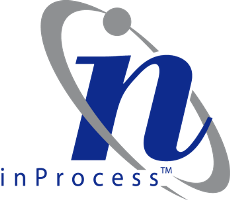Transform Intellectual Capital Into Organizational Value
You’ve made the decision to map your organizations business processes. You’ve identified the processes you want to document first. Now, how do you actually begin to “map” these processes?
First, schedule at least a two hour meeting with the employees who are directly responsible for executing the process(es) identified. If it’s only one person that’s fine too, but make sure you have a quiet location to work in.
To begin this meeting, you will need a few items:
- Post-It notes
- Butcher Paper that you can attach to a wall, or a White Board. Keep in mind that, as the person that makes the map, you need to be able to refer to this map later. It’s a good idea to take a photo of all your documentation, however you do it.
- Make sure you have some markers that you are comfortable with – you’ll be doing a lot of writing. This is where a person trained in process management, or a person with some facilitating skills, is a necessity.
- A note taker. Bring in someone that can take notes during the conversation to capture the background information; the facilitator is usually too busy to be able to do this.
Once all of the materials are ready, you can begin walking your process. The first step is to determine the name of your process. The more specific you can name the process the better. You want everyone in the organization to be able to find the process quickly when they need to. Along with this step, you also need to determine the bookends to your process (where it starts and where it ends). Some processes have sub processes, or can be very lengthy. You want to make sure you identify a digestible beginning and the end in order to keep the team focused. One way to accomplish this is to identify the purpose of the process. What are you trying to accomplish with this process? What result are the steps leading to, and how do you accomplish the steps? This is a summary of your process, which will help you as you document the process further.
In my many years of experience as a Business Process Analyst, the next step seems to confuse people the most. Most people are anxious to get started with mapping out the execution steps; however, they must be cautious to not jump the gun too early. Before that happens, you need to identify the inputs and output of the process. The explanation of this is pretty simple, but always throws people for a loop. Inputs are anything that you use to accomplish the task – people, computers, a type of software, a system, etc. The output is what you are producing. If it’s a service-based process, what type of service are you providing – the more specific the better. For example, a service-based process would be providing excellent customer service on a call. How do you define excellent customer service? Providing excellent service, or delighting the customer is more difficult than providing lukewarm customer service. What do your employees need to be able to provide the type of excellent customer service you expect (these are your inputs)? Maybe it’s additional training, a script, customer history information, you can create a list to be addressed later on these issues.
So why do I ask you to document the inputs and outputs? This step really puts everyone on the same page with the process, and it gets them thinking. You can identify any risks associated with the process at this point, and really ask why you are doing this process in the first place. If the output of your process is a product, you have to execute the process in sequential order and below a certain cost point; you may need to make some adjustments in your process along the way. Maybe that’s the reason you are having difficulty with the process.
So this is the beginning of how to document your process –
- Name the Process
- Determine the Beginning and the End of the process – you can also identify any sub-processes at this point
- Document the Purpose of the Process
- Identify your inputs and outputs
My next blog will discuss how to put the process map on paper, identifying the steps, and starting to create a map.
